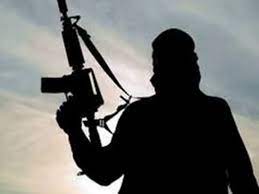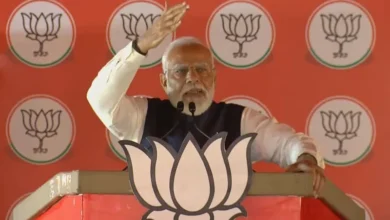Data Analysis: How Terror in J&K Has Been Losing Ground
Jammu and Kashmir was a state up until August 5, 2019, and it thereafter became a union territory. Today, the area is tranquil. The tendrils of Pakistan-sponsored terror that previously encircled it seem to be under control. A comparison of the statistics from UPA and NDA also reveals some intriguing information.
Data from SATP, a website that compiles information on terrorism, illustrates how the scope has decreased under the NDA rule. 4,117 terrorist events were recorded from J&K between 2004 and 2014, all of which occurred during the UPA administration. That equals 412 on average per year. Each year, 116 members of the security forces and 150 civilians are murdered on average.
During the NDA years, it drastically decreased. The data provided indicates that there were 128 fewer murders yearly from 2014 to August 31, 2023, a 69% decrease. Killings of civilians decreased by 77%.
Increased pressure on terror networks resulted in less terror activity and, as a result, fewer fatalities among security forces personnel. In the NDA period, it decreased by 50%.
CONTROLLING THE NOOSE
The Valley has seen a reduction in terrorist infiltration because to an improved and efficient security network. Its impact was amplified by the assault on terror financing that followed the repeal of Article 370 parts and has effectively slowed the spread of local terrorism by dismantling separatist and terror finance networks.
More than 4,200 terrorists were killed in J&K under the UPA administration. Approximately 1,700 years have passed throughout the NDA years. The figures demonstrate how effective the Indian government is. It has been successful in dismantling the terror network in J&K that is sponsored by Pakistan.
With the number of significant terrorist occurrences and other relevant statistics, this may be assessed more accurately. Between 2004 and 2013, there were 627 significant terror events in Jammu & Kashmir. During the last nine years and eight months of the NDA rule, it decreased by 49%. From 2004 through 2013, 348 arms were recovered annually on average. It was reduced to 128 guns seized during the NDA years because to improved security measures that steadily curbed the jihadist support network, both locally in J&K and from Pakistan. During the UPA period, J&K had six suicide attacks year on average. The NDA years saw four suicide attacks total, according to statistics accessible until 2022. Additionally, the average annual number of explosions decreased from 96 to 42.
Abrogation of Sections of Article 370: The Death of Kernel
The Valley’s concentration of political figures who supported Pakistan was the root of the problem. Despite declaring loyalty to India, the state’s governmental leadership was often criticized for having a “soft” approach toward Pakistan. Jamaat-e-Islami (JeI), the Hurriyat Conference, and other parallel separatist groups allegedly involved in funding terrorism, served as support systems for terrorists. They were also supported by a substantial network of overground workers (OGWs), who gave terrorists lodging and logistical assistance. They engaged in daily radicalization, terror recruiting, and anti-India propaganda.
Eliminating the “anti-India” network in the state that partnered with Pakistan in funding, recruiting, and concealing terrorist operations was the only way to find the route to peace. Jammu and Kashmir’s special status ended on August 5, 2019, when Article 370 parts were repealed. In order to be directly ruled by the Union of India until the circumstances were favorable for the establishment of a legislative body, it was made a union territory and detached from Ladakh.
All parties and separatist leaders connected to Pakistan were detained at this time. Effectively disrupting the funding of terrorism, a thorough operation was started to capture OGWs. Over 900 OGWs have been taken into custody as of this writing, according to a report from the Observer Research Foundation. The findings were astounding: a dramatic decrease in terror occurrences after the relaxation of Article 370, along with a halt to stone-pelting instances.
According to a recent affidavit filed in the Supreme Court by the Government of India, after the Article 370 sections were repealed, there were 45% fewer terror incidents, 90% fewer infiltrations, 97% fewer stone-throwing incidents, and 66% fewer security force casualties in the union territory than there were in 2018. Strike declarations or hartals are a thing of the past.
On July 27, 2023, a Muharram parade was successfully organized in Srinagar after a 34-year hiatus without a single act of terrorism. It was attended by more than 25,000 Shia Muslims, reflecting and supporting India’s peacekeeping efforts in a region that has long been a part of it but over which it has conflicts with Pakistan and China.







